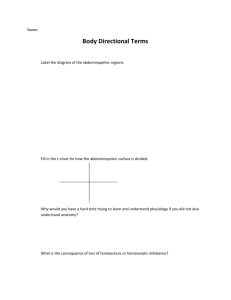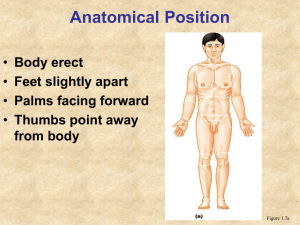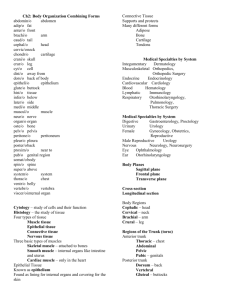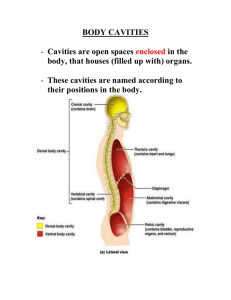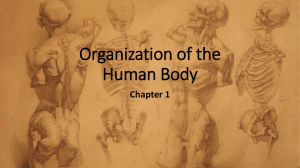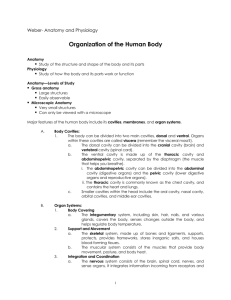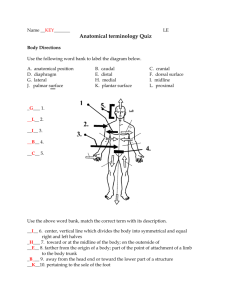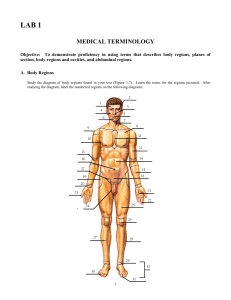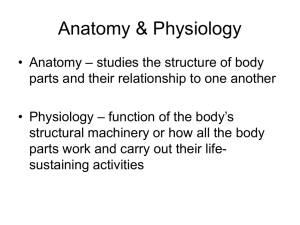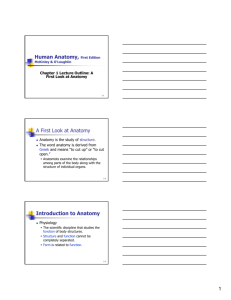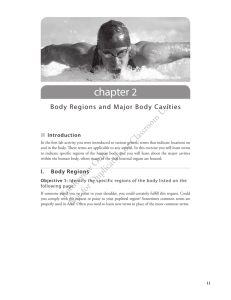Anatomical Position
advertisement
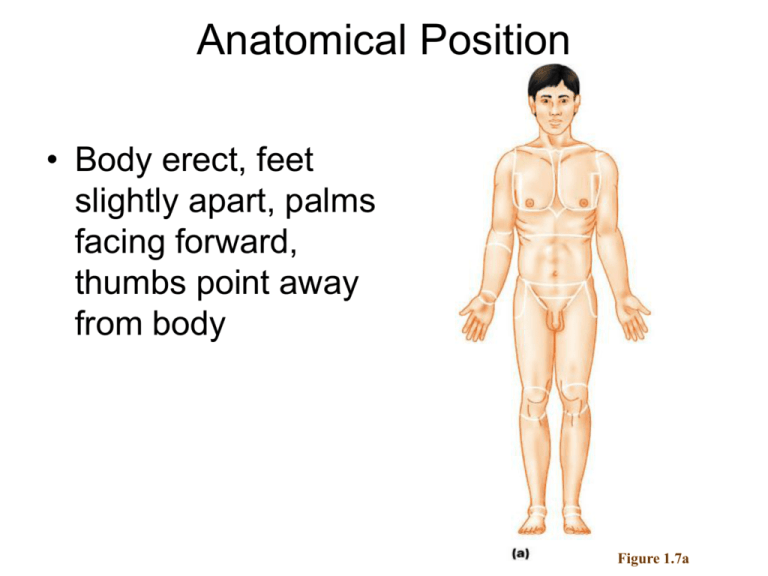
Anatomical Position • Body erect, feet slightly apart, palms facing forward, thumbs point away from body Figure 1.7a Directional Terms • Superior and inferior – toward and away from the head, respectively • Anterior and posterior – toward the front and back of the body • Medial, lateral, and intermediate – toward the midline, away from the midline, and between a more medial and lateral structure Directional Terms • Proximal and distal – closer to and farther from the origin of the body • Superficial and deep – toward and away from the body surface Directional Terms Table 1.1 Directional Terms Table 1.1 Regional Terms: Anterior View • Axial – head, neck, and trunk • Appendicular – appendages or limbs • Specific regional terminology Figure 1.7a Regional Terms: Posterior View Figure 1.7b Body Planes • Sagittal – divides the body into right and left parts • Midsagittal or medial – sagittal plane that lies on the midline • Frontal or coronal – divides the body into anterior and posterior parts • Transverse or horizontal (cross section) – divides the body into superior and inferior parts • Oblique section – cuts made diagonally Body Planes Figure 1.8 Body Cavities • Dorsal cavity protects the nervous system, and is divided into two subdivisions – Cranial cavity is within the skull and encases the brain – Vertebral cavity runs within the vertebral column and encases the spinal cord • Ventral cavity houses the internal organs (viscera), and is divided into two subdivisions: thoracic and abdominopelvic Body Cavities • Thoracic cavity is subdivided into pleural cavities, the mediastinum, and the pericardial cavity – Pleural cavities – each houses a lung – Mediastinum – contains the pericardial cavity, and surrounds the remaining thoracic organs – Pericardial cavity – encloses the heart Body Cavities • The abdominopelvic cavity is separated from the superior thoracic cavity by the dome-shaped diaphragm • It is composed of two subdivisions – Abdominal cavity – contains the stomach, intestines, spleen, liver, and other organs – Pelvic cavity – lies within the pelvis and contains the bladder, reproductive organs, and rectum Body Cavities Figure 1.9a Body Cavities Figure 1.9b Ventral Body Cavity Membranes • Parietal serosa lines internal body walls • Visceral serosa covers the internal organs • Serous fluid separates the serosae Ventral Body Cavity Membranes Figure 1.10a Ventral Body Cavity Membranes Figure 1.10b Other Body Cavities • Oral and digestive – mouth and cavities of the digestive organs • Nasal –located within and posterior to the nose • Orbital – house the eyes • Middle ear – contain bones (ossicles) that transmit sound vibrations • Synovial – joint cavities Abdominopelvic Regions • • • • Umbilical Epigastric Hypogastric Right and left iliac or inguinal • Right and left lumbar • Right and left hypochondriac Figure 1.11a Organs of the Abdominopelvic Regions Figure 1.11b Abdominopelvic Quadrants • • • • Right upper Left upper Right lower Left lower Figure 1.12

